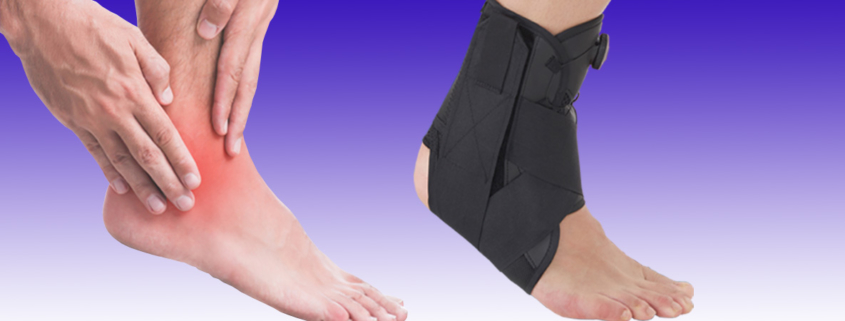The Brace Guide from Athrohab – Part 7
Selected conditions of the ankle that can benefit from a brace
Achillies Tendonitis
Common among sports enthusiasts that sharply increases with their training frequency. Care should be taken when running on the beach or on extremely soft ground.
If you have a deformity, such as high arches, it will be enhanced on soft ground which will further load the tendon. Achilles tendonitis can take a long time to heal.
Possible causes:
- A sharp increase in training frequency as well as intensity.
- Limited range of motion in the ankle joint.
- Poor stretching or short muscles.
- Worn-out shoes with insufficient stability and shock absorption.
Symptoms:
- Pain over the Achilles tendon, usually the middle of the tendon but also in and around the insertion.
- The Achilles tendon feels stiff and loading is painful, especially in the morning or after a prolonged rest.
- Local swelling and heat sensation over the affected area.
- Crepitations over the tendon felt during activity.
Suggested actions:
- Try to find other activities for a few weeks that do not give you pain, such as swimming.
- Treat the area with ice to reduce pain.
- Use an ankle brace to keep the Achilles tendon warm.
- Use a heel wedge of 8-10 mm to unload the Achilles tendon (must be used on both feet to prevent an imbalance).
- Physical therapy with specific eccentric training.
- Gait analysis to verify that you have appropriate shoes. If any deformities are found, correct with temporary wedges or biomechanically stabilized insoles.
Suitable product: one size ankle brace with extra strap.
Ankle Injury
Ligament injuries of the ankle are very common and affect everyone from elite athletes to average exercisers.
Twisting your ankle is easily done. The most common injuries are the ones that affect the outer ligaments. Injuries to the internal ligament are more unusual. The injury may seem small and uncomplicated, but after a few hours when swelling increases and you can’t load the foot, you understand that something serious has happened. A poorly managed ankle injury can cause many problems later in life.
Ankle injuries may take a very long time to heal and the risk of re-injury during the rehabilitation phase is very high.
Always seek professional help for severe ankle injuries.
Possible Causes:
- Walking on uneven ground or terrain.
- Repeated sprains or twisting of the ankle during sports such as Football, Rugby, Tennis, Martial Arts.
- Lack of stability of the ankle joint or an extensive supination of the joint can increase the risk.
- Shoes with poor stability.
Symptoms:
- Immediate pain after the injury. Gradually becomes worse with increased swelling and reduced range of motion in the ankle joint.
- Bruising of the affected area.
- Pain when loading the foot and difficulty walking normally.
Suggested Actions:
- Apply a compression bandage immediately after the injury and keep it on for 1–2 hours. It can be loosened afterward but should be kept on as long as there is a swelling.
- The affected area can be treated with ice to reduce pain and swelling but only after the compression bandage has been applied.
- Use an ankle brace to support and protect the ankle.
- When the swelling and pain have gone down, you can begin coordination and balance training. A balance disc is a perfect rehab tool for ankles.
- Consult an orthopaedic doctor if your injury has not improved within a few days.
- Physiotherapy with specific training to restore full balance, strength and mobility in the ankle.
Suitable products: Boa ankle brace.






